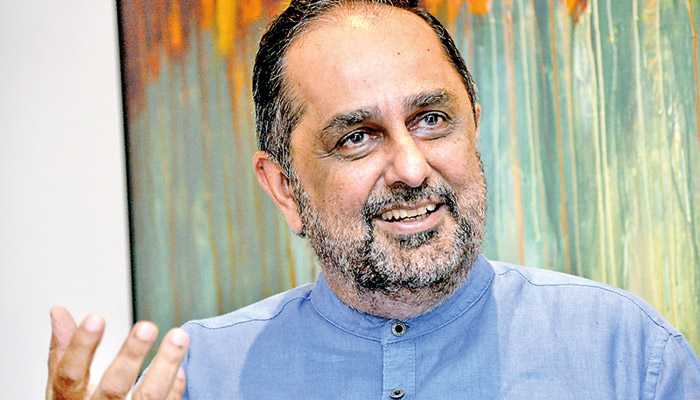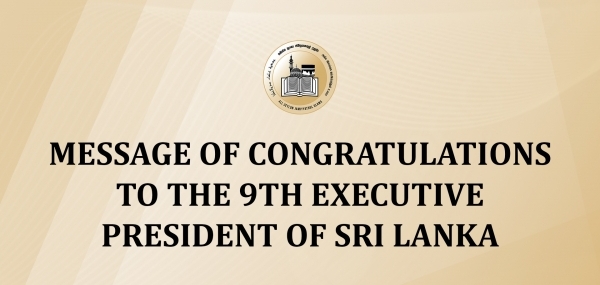The gory practice of fake encounter killings highlights both judicial apathy and police culpability.

AHMEDABAD Judicial Magistrate S.P. Tamang’s report on the killing in an “encounter” of 19-year-old Ishrat Jahan has confirmed what many had suspected on the basis of less-than-convincing official accounts – that she and three others were killed in cold blood by the Gujarat Police. The fact that the police team was led by former Anti-Terrorism Squad chief D.G. Vanzara, indicted for the encounter killing of Sohrabuddin Shaikh in 2005, only adds a sin ister dimension to the episode, itself a part of a long string of such cases under Narendra Modi since the anti-Muslim pogrom of 2002.
By all accounts, Tamang based himself on strong ballistics evidence and official post-mortem reports to show that “Ishrat was murdered in a systematic manner, cold-bloodedly, mercilessly and cruelly by the police… with their service revolver and unlicensed and illegally held AK-56 rifle and with other weapons.” Tamang concludes that the police version was fabricated: “No encounter took place”, nor did the police fire in self-defence. The police planted three loaded magazines containing 30 cartridges each on the victims’ bodies. Tamang has indicted 25 State officials for the gruesome crime.
To its abiding disgrace, the Gujarat government has tried to discredit Tamang by resorting to hair-splitting about the remit of Section 176(1A) of the Criminal Procedure Code. This simply will not wash. The section empowers a magistrate to investigate every death, disappearance or rape in police custody. If the encounter was indeed fake, then, logically, the victims were in police custody before being killed. (Custody does not mean lock-up – it means in the control of the police.)
Even more deviously, the Gujarat government has cited a Central government affidavit that links Ishrat to a terrorist group. This is a complete red herring. The affidavit does not sanction or justify non-judicial killing, or to put it plainly, murder. The Bharatiya Janata Party has shown where it stands on the issue by defending the Modi government and chiding the Congress for “sympathising with” terrorists such as Ishrat.
Ishrat’s murder, like Sohrabuddin’s, highlights the high level of criminalisation of the administration under Narendra Modi. No less a person than R.B. Sreekumar, Gujarat’s intelligence chief during the 2002 pogrom – who was victimised for deposing against the government before the Nanavati-Shah Commission and denied a promotion as Director-General, but who got it after retirement under the Central Administrative Tribunal’s orders – has now stated that the Gujarat Police staged encounters “as a matter of policy”.
During the February-April 2002 violence, G.S. Subbarao, Chief Secretary of the Gujarat government, told Sreekumar that “we will have to kill some people to prove that the Gujarat Police is very strong… .” Sreekumar is a conscientious officer who maintained a detailed diary of the 2002 events. His allegation calls for a thorough investigation into the encounter “policy”.
Gujarat is, of course, an especially obnoxious case of extrajudicial or custodial killings of individuals suspected to be terrorists or hardened criminals. Hundreds of people have been subjected to physical harassment and torture or gunned down there, often out of communal motives.
Regrettably, Gujarat is not the only State where there is a high incidence of custodial deaths, of which fake encounters are a subset. Many other States and Union Territories (Delhi, Puducherry and Chandigarh) too have witnessed custodial deaths and reported them to the National Human Rights Commission (NHRC) under the guidelines it issued in 1993.
Now, it is a well-known fact, confirmed by the NHRC itself, that its guidelines are regularly flouted, and that States do not report custodial deaths to it within 24 hours as they are meant to do. In fact, the NHRC had to issue revised guidelines in 2003 after noting this. The 2003 guidelines mandate an inquiry into all cases of custodial deaths by an “independent investigating agency” and “a magisterial inquiry… in all cases of death which occur in the course of police action… [with which] the next of kin of the deceased must invariably be associated”.
It calls for the filing of an FIR for “culpable homicide” against police officials where a cognisable offence is made out; and for “prompt prosecution and disciplinary action… against all delinquent officers found guilty in the magisterial inquiry/police investigation”.
The NHRC also mandates that “no out-of-turn promotion or instant gallantry rewards shall be bestowed… soon after the occurrence” and that “a six-monthly statement of all cases of deaths in police action in the State shall be sent by the Director-General of Police to the Commission with the pre-trial details”. These guidelines too are often violated.
Custodial deaths
Even so, the cases reported to the commission are enough to send shivers down one’s spine. Between 1994 and 2008, there were 16,836 custodial deaths in India – an average of 1,203 persons a year, or more than 100 a month. This number has risen from 1,037 in 2000-01 to 1,977 in 2007-08 at a virtually uninterrupted rate (except for one year). This list is incomplete. Reputed human rights groups have documented and reported additional cases to the NHRC.
The State-wise break-up bears testimony as to how deep and wide such murderous proclivities have spread in our police. Between April 2007 and March 2009, Maharashtra topped the list, with 192 custodial deaths – no surprise, given the fatal contributions of some “celebrated encounter specialists”. Next come Uttar Pradesh (128), where suspected dacoits and terrorists are summarily killed, and Gujarat (113), where Muslims are especially targeted.
No less appalling is the record of Andhra Pradesh (85), Jharkhand (29), and Chhattisgarh (23), where Maoists are gunned down. The turbulent north-eastern region (Assam, 74; Meghalaya, 16; Arunachal Pradesh, 11; and Tripura, nine) is high on the list. Even West Bengal has a score of 83. Delhi, where “encounter king” Rajbir Singh long held sway, recorded 25 deaths. And even “peaceful” Uttarakhand and Himachal Pradesh recorded 16 and two deaths. Surprisingly, Jammu and Kashmir reported only nine deaths.
Note that these custodial deaths figures generally exclude “fake encounter” killings. The police typically claim they killed in self-defence outside police custody. There is no way of knowing how many such murders have occurred. But we have graphic evidence of the murder of Sanjit Chongkham in July in Manipur, the infamous Ansal Plaza case of 2002, and the Batla House episode a year ago.
The police version(s) of the Batla House encounter does not square up with the sequence of events as seen by eyewitnesses, the fact that Inspector M.L. Sharma was not wearing a bullet-proof jacket, and visual evidence from the injuries on the skulls of the two killed “terrorists”, suggest that bullets were fired from point-blank range. Ballistics tests and post-mortem records could clarify things. But the police have refused to disclose these. The NHRC recently produced a report endorsing the police version. But this lacks credibility because it did not conduct an independent inquiry, record evidence or reveal the forensic reports.
The picture that emerges is distressing. The police enjoy virtual impunity as regards extrajudicial killing. There is no accountability. There is no real pressure to follow NHRC guidelines. The NHRC lacks the power to enforce them. Errant policemen are rarely brought to book. Their superiors tend to shield them.
Encounter specialists exercise a corrosive influence on the police, and wield enormous blackmailing clout because of their access to large clandestine funds, and their contacts with the underworld who tip them off, enabling them to bypass and sabotage standard operating procedures and regular law-compliant police methods. Often, even Ministers are unable to transfer them out of their postings. They undermine the rule of law in the very institution that is meant to respect and enforce it.
This spells descent into lawlessness and a barbaric state of affairs, where a handful of men impose their will upon the citizenry by force, with impunity, and with the silent complicity of the state. No one, least of all, the police, can exercise the terrifying power to snuff out human life without destroying the legal foundation on which civilised society is built.
Policemen commit encounters for a variety of reasons. They may kill out of a pathologically national-chauvinist zeal to destroy terrorism or out of rank communal hatred. They sometimes want to please their masters. Sometimes they kill to win awards and honours, and hence promotions. Often, their superiors – and citizens who are cynical about due process of law – justify this disgusting shortcut to “retribution” on the grounds that prosecuting terrorists or hardened criminals takes far too long and might also be ineffective as a deterrent. Far too many police officers rationalise and make apologies for fake encounters on these grounds.
Yet, nothing can justify non-judicial executions. The deterrence argument is totally wrong. Nothing, not even the certainty of being killed in an encounter, will deter a fanatic. But there is some merit in the argument about India’s notoriously dilatory legal process, which the higher judiciary has not done enough to rectify. The judiciary has been relatively apathetic to the imperative of preventing the flagrant violation of law involved in encounter killings. It must acknowledge this. What we need is urgent judicial intervention on encounters. There is a case for taking suo motu notice of encounters and blatant breaches of NHRC guidelines.
The Supreme Court and the High Courts often take such notice even on lesser matters such as urban development, administrative corruption, and abuse of power. But on the life-and-death encounter issue, they have failed to act adequately even when petitions were moved requesting their intervention.
An example from Andhra Pradesh should suffice to establish the point. The Andhra Pradesh Civil Liberties Committee (APCLC) filed a complaint with the NHRC in March 1993 about 285 encounter killings, which it documented. The Commission investigated five of them and found the complaint justifiable. On that basis, it made specific recommendations to the State government to ensure that every custodial death must be registered through an FIR and investigated. When the police are involved in a cognisable offence, the case must be referred to the Criminal Investigation Department and properly pursued.
No FIRs, no court directions
The Andhra Pradesh government accepted the recommendations and accordingly amended its Police Manual in 1996. In 1997, the APCLC documented 197 encounter deaths, but said that not a single FIR was registered. Between 1997 and 2003, 1,314 more people were killed in encounters in Andhra Pradesh. No FIR was registered. The APCLC filed 30 petitions before the Andhra Pradesh High Court, but the court did not issue directions to the State government. Between 2003 and 2007, there were 524 encounter deaths. No FIRs. Twenty petitions. No court directions. This was utterly shocking and indefensible.
In February, however, a Full Bench of the Andhra Pradesh High Court issued four directions to the government, which mandated tighter procedures than the NHRC’s guidelines, including FIRs and a magisterial inquest even in the case of police killing in self-defence. In effect, these procedures prevent the police from playing their favourite trick: file an attempt-to-murder counter charge against the victim while taking shelter behind “self-defence”, eventually closing the case because the victim is dead.
This is a big step forward in bringing the practitioners of encounters to book. Regrettably, on March 4, the Supreme Court stayed the order on a mere verbal mention by a lawyer of the Andhra Pradesh Police Association, who contended that this would entail putting on trial even the policemen who killed the November 26 terrorists in Mumbai.
One can only hope, fervently, that at the next hearing, due soon, the Supreme Court upholds the High Court’s order and stipulates even stricter procedures to plug the loopholes policemen use to evade responsibility for encounters. The higher judiciary must not let down the causes of the rule of law and respect for human life, the constitutional right to which is foundational, indeed sacrosanct in any society that aspires to be even minimally civilised.
If the judiciary fails us, Parliament should enact a law creating a specialised independent agency which deals with complaints of police excesses, along the lines of the United Kingdom and South Africa. We cannot allow trigger-happy policemen to gun down a thousand citizens a year without giving them the opportunity to face trial, defend themselves, be proved guilty, and punished. That is wholly unconscionable.
Post Disclaimer | Support Us
Support Us
The sailanmuslim.com web site entirely supported by individual donors and well wishers. If you regularly visit this site and wish to show your appreciation, or if you wish to see further development of sailanmuslim.com, please donate us
IMPORTANT : All content hosted on sailanmuslim.com is solely for non-commercial purposes and with the permission of original copyright holders. Any other use of the hosted content, such as for financial gain, requires express approval from the copyright owners.
 Sri lanka Muslims Web Portal Diversity and Inclusiveness – Sri Lanka Muslims
Sri lanka Muslims Web Portal Diversity and Inclusiveness – Sri Lanka Muslims




History has taught nothing to the Muslims. The majority are still “DOZING” , living in a somewhat fantasy World. It is high time they bury their petty differences and unite to confront an enemy who is invisible. Everyone of us should realize that this so -called enemy is found in every Country in the Form of the “Crusades”, but, with “Arms” invisible.
The details are horrifying. Two points are worth noting. The main target of the extrajudicial killings seem to be the Indian Muslims. The double standards shown by the international community is also horrifying, considering that so much is made of hr violations in Sri Lanka and so little of what seems to be going on in certain other countries.